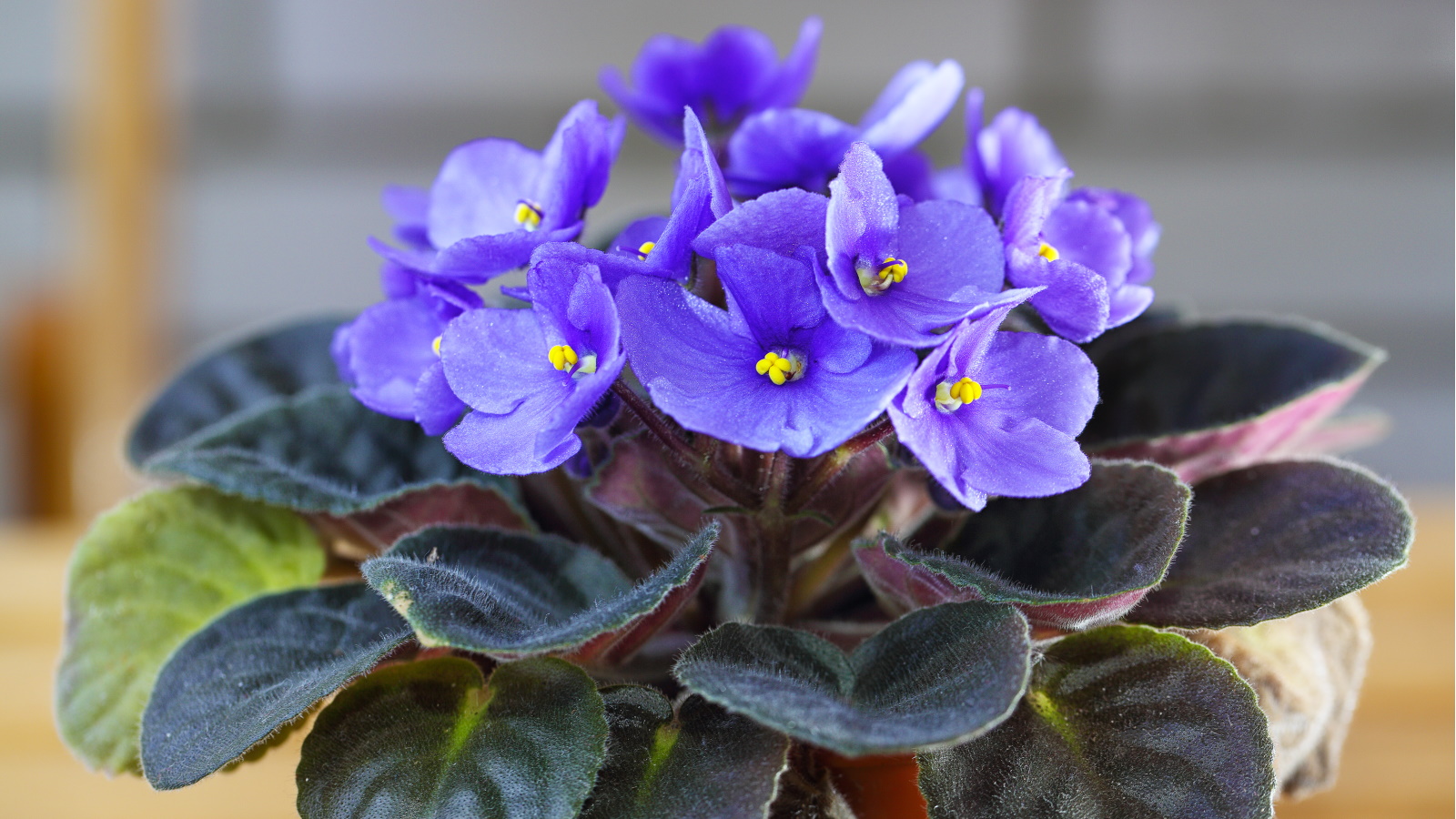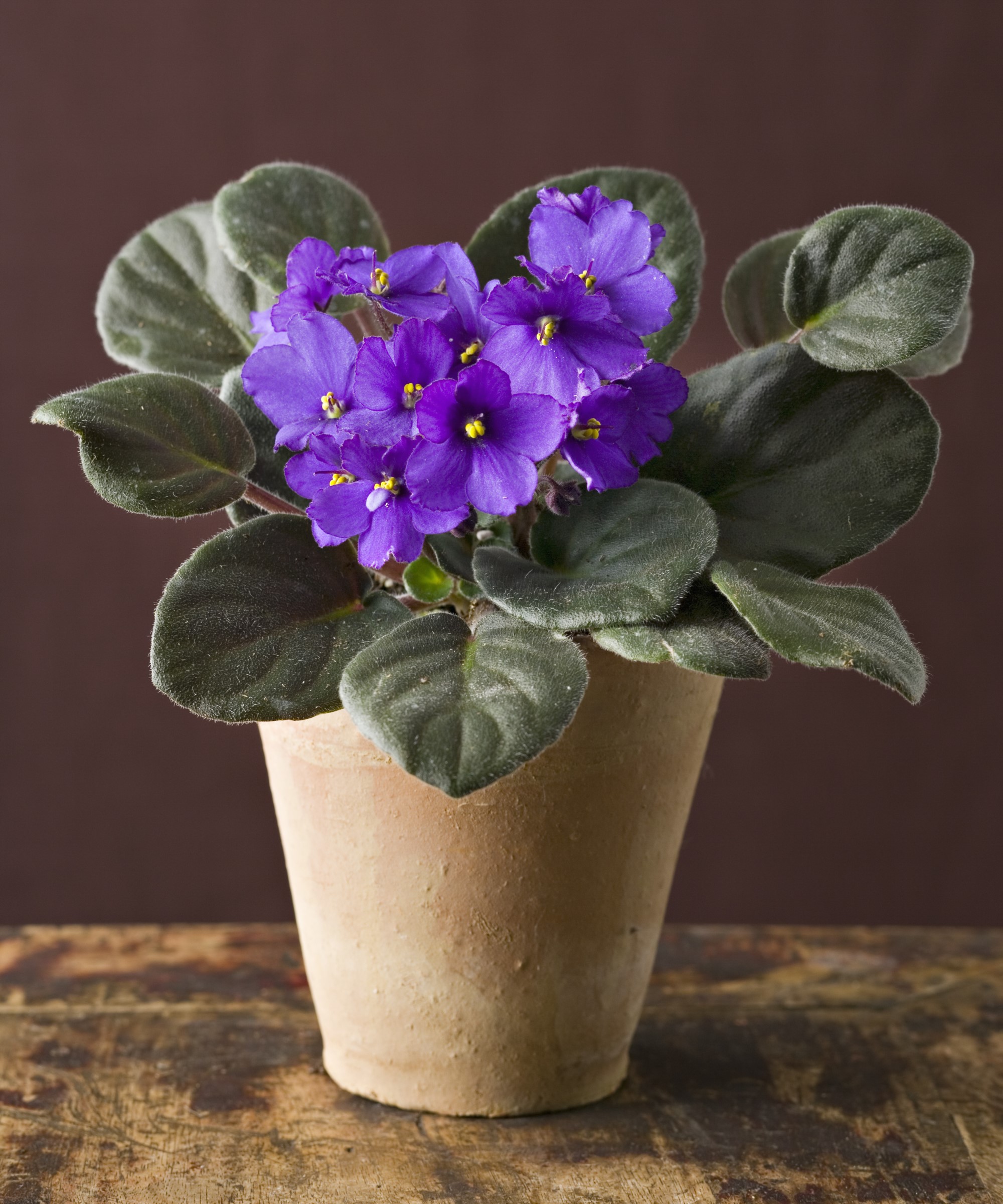
African violets, or Saintpaulia, have been in the spotlight recently as houseplant lovers are brightening up their interiors with these gorgeous, vibrant blooms. They are among the best indoor flowering plants and will flower nearly all year round.
As their name indicates, these compact flowers are native to eastern African countries, found growing low to the ground in rainforests. There are many varieties of African violets that offer a whole range of colors, from red to classic purple.
They're small, growing up to six inches tall, and thrive as indoor plants but can also be grown in the yard in US hardiness zones 11-12.
It's easy to multiply your African violets by taking cuttings from mature plants. It will only take a few weeks for roots to appear but these are slow growing plants so a little patience is required to see new flowers bloom.
We asked experts for tips to successfully propagate African violets for an abundance of beautiful indoor blooms.

How to propagate African violets
When it comes to multiplying African violets, there are a couple of methods you can choose from. We've spoken to experts to find out how to be successful in African violet propagation so that you can brighten your home with more of these vibrant flowers.
Propagate African violets in water

One of the easiest ways to propagate African violets is by taking leaf cuttings and popping them in water.
'Pick a mature, firm, and healthy leaf,' says Vladan Nikolic from Mr. Houseplant. 'Cut the leaf off with a sharp knife, leaving one to two inches of the leaf stem attached to the leaf blade.'
It's always important to use clean and sterile tools when taking cuttings to make sure you aren't transferring any harmful bacteria to your plant. The best tools for cuttings include sharp scissors, like these scissors from Walmart, or pruning shears, like these pruning shears from Greendigs.

Once you have your African violet leaf cutting, you need to place it in a container of clean water.
'The leaf blade should be above water, whereas the petiole (stem) should be submerged,' says Vladan. 'You can put a plastic wrap over the container, poke a hole in it, and insert the stem through the hole. This will help you keep the cutting in place,' he suggests.
You may also choose to use an indoor growing system, like a propagation station, for this because it helps keep your cuttings in place and allows you to observe the rooting progress.
To encourage rooting, keep your container in a bright, warm spot. 'Replace the water weekly or more often if it gets dirty,' says Vladan.
After three to four weeks, you will notice roots growing from your cutting. When they are around two inches long, it's time to pot them up. Simply transfer the cutting into a container with well-draining potting mix, like this African violet potting soil from Perfect Plants nursery, and keep it well-watered while the young plant establishes.
Propagate African violets in soil

Propagating African violets in soil is just as easy as water propagation - this time, you just put the cutting straight in potting mix.
Once again, you will need a cutting of a healthy leaf with a stem around one to two inches long.
'The oldest leaves at the bottom aren’t the best leaves to use. African violets have layers of leaves and the leaves get smaller as they progress to the top of the plant. It is better to use a middle leaf,' says Lisa Eldred Steinkopf from the Houseplant Guru.

Fill a container with well-draining potting mix and make a small hole that is a couple of inches deep.
'Making a hole first prevents the bottom of the petiole from getting damaged when inserted into the potting medium. I suggest making the hole at an angle,' says Lisa.
Plant the cutting into the hole and keep the potting mix moist, but be careful not to overwater because it could lead to waterlogging and root rot.
'In a few weeks, you should see baby plants appearing at the base of the leaf. You can separate the small plantlets from the parent plant and pot them up,' says Lisa.
Keeping the cuttings warm is key to encourage rooting, so you may find that a humidity dome, like this humidity dome from Amazon, can help.
Shop propagation stations online
This simple and elegant test tube-style propagator will suit any wall spaces. The slim glass containers are perfect for propagating houseplant cuttings.
These hydroponic vases have a simple and elegant design suitable for living room, kitchen, office, or window sill.
This propagation station in natural wood has a unique textures. The high transparent borosilicate glass is smooth, allowing you to observe the growth of your plants more clearly.
FAQs
How long does it take to propagate African violets?
If you provide plenty of bright, indirect light and lots of warmth for your African violet cuttings, you can expect to see roots within three to four weeks.
African violets are not fast-growers so it will take a little longer for your young plant to then grow into an established one. The wait will be worth it, however, as you will be rewarded with an abundance of bright flowers.
If you love how your African violets brighten up your space and want to grow more, it's easy to multiply them from cuttings. Propagation is a great way to get more houseplants for free, just make sure to research the best methods for your plant to avoid making common propagation mistakes.







